Ulsan Hyundai FC and Seongnam FC is as antagonistic as it can be. One team plays fast and fluid football and have scored the maximum number of goals in this K-League 1 campaign and the other is the joint top in conceding the least number of goals and had scored just five goals in seven matches leading to this fixture.
Many believed it to be a low-scoring affair with whoever nicked the first goal would come out to be victorious and the game did not disappoint the majority. However, there were frequent small tweaks in the tactics especially by the Ulsan manager, Kim Do-Hoon. This tactical analysis will discuss those tweaks in tactics and how did the other manager counter these tweaks.
Lineups
Kim Do-Hoon stuck with his preferred 4-1-4-1, however, the Ulsan manager had to make one forced change. Chung Yong-Lee, the former Bolton (League 1) and Crystal Palace (Premier League) winger sat out due to an injury scare he faced last week against Pohang Steelers. The interesting aspect to the lineup was that the left-back, Seol Wong-Woo, who was handed the professional debut last week started in the right-wing. He was mostly non-influential and was subbed off at the start of the 2nd half.
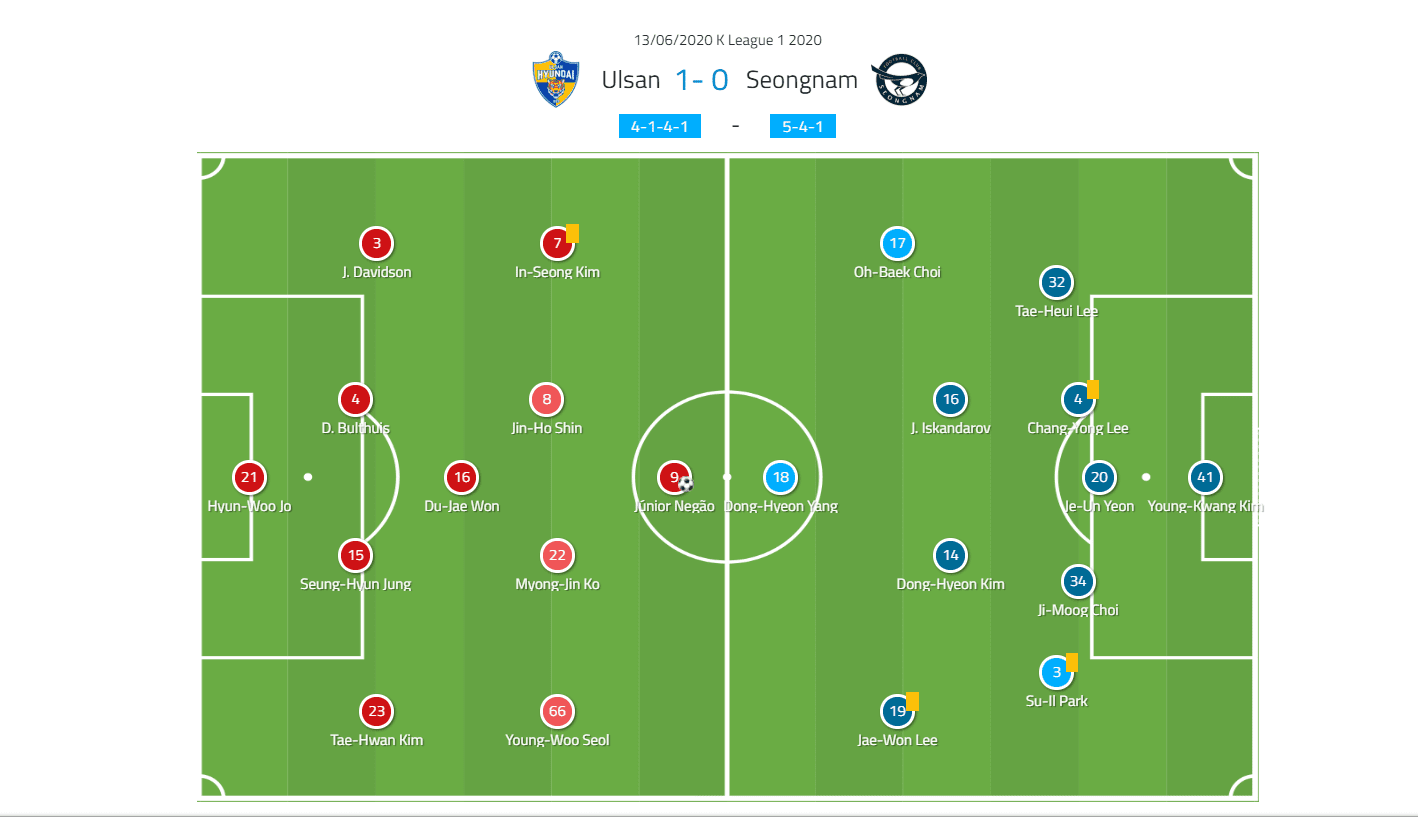
Kim Nam-il switched to his preferred 5-4-1 to have more stability in the lineup. He made wholesale changes along with the change in the formation. Su-II Park started as a left wing-back, however, played as a winger when in possession. Chang-Yong Lee was brought back to the lineup playing as a right centre-back. The captain, Je-Un Yeon, right-back, Tae-Heui Lee kept their places. Ji-Moog Choi was shifted to left centre-back from the left-back position he played in the last game, however, he acted as the left-back when in possession.
Jae-Won Lee and Dong-Hyun Kim were recalled in the starting lineup playing as a left-winger and left centre-midfielder respectively. The other attacking players, Jamshid Iskandarov, Oh-Baek Choi, and Dong-Hyeon Yang kept their place in the starting lineup.
Seongnam out of possession
Seongnam maintained a low-block throughout the game which is explained well by Seongnam’s 17.31 PPDA (Passes Allowed per Defensive Action), preventing the central channels. However, the ball-near winger presses once the ball is played out to a full-back or the ball-near wing-back presses once the ball is played out wide to a winger. The pass, out wide, is the pressing trigger for the Seongnam players.
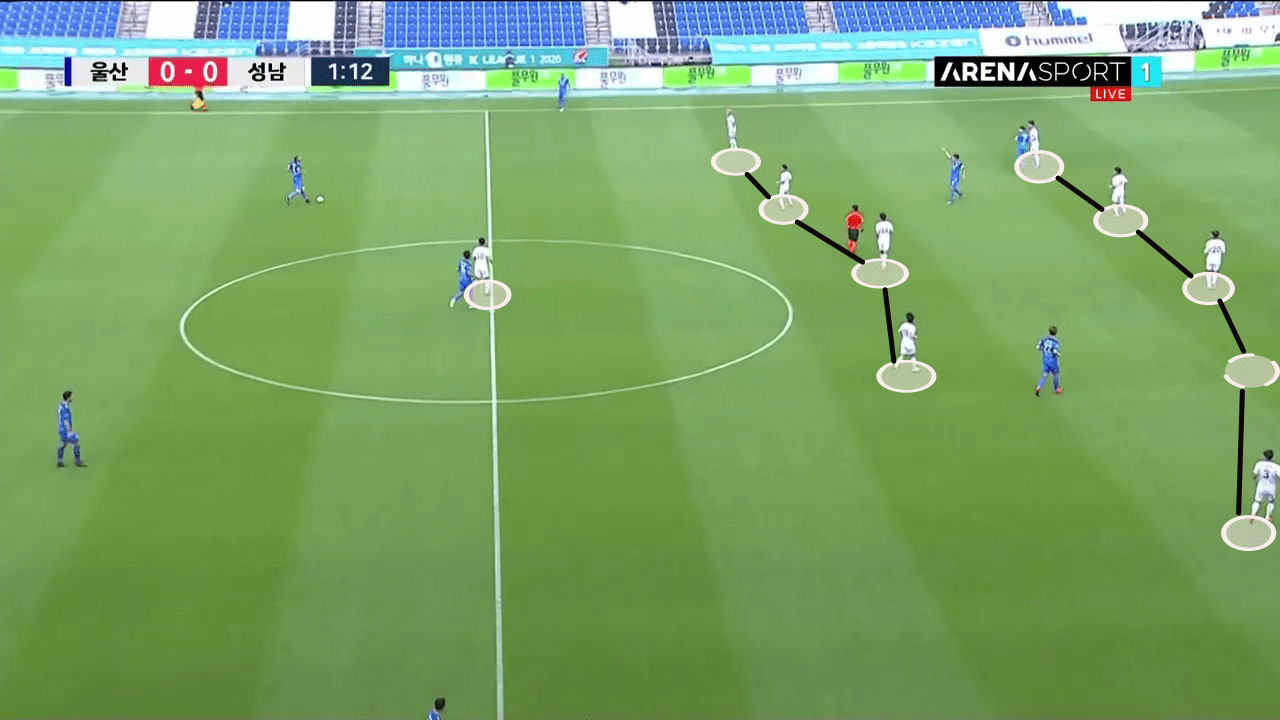
The whole unit moves with respect to the ball, as in the above image, the whole Seongnam unit moved right once the ball is being circulated to the right vertical channel (with Seongnam in focus). The unit is too compact, with the striker, Yang, marking the pivot and the RCM, Iskandarov protecting the passing lane to the Ulsan LCM, Jin-Ho Shin, who is operating in the half-space in between the lines. Thus leaving the forward passing lanes open for the players in the outer channels only.
In the image below, when the ball is circulated to the left vertical channel (with Seongnam in focus), the entire unit moves left. As mentioned previously, when the ball is played out to the RB, the Seongnam LW, Jae-Won Lee presses the RB inwards, to prevent the diagonal passes.
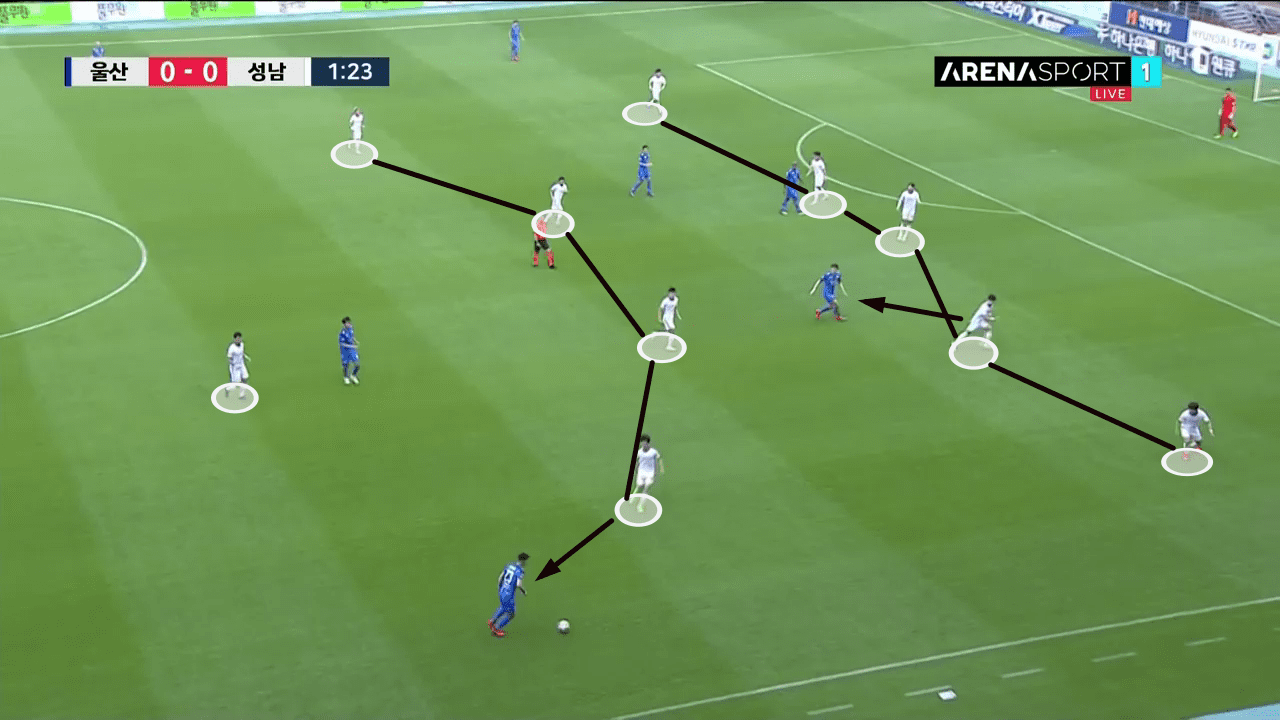
Playing with five defenders has an advantage which can be seen in the image. If an opposition player operates in between the lines, he can move up the defensive line and mark the opposition player closely, since he has enough bodies to cover for him in case the ball is played behind him. Even in this case, it can be seen, the striker, Yang is constantly following the Ulsan pivot.
Ulsan in possession
Seongnam’s compact defensive shape gave a hard time to Ulsan. Ulsan Tigers struggled to break Seongnam’s low block throughout the match, as the xG suggests. Ulsan registered a mere 0.9 xG, the first game in this campaign where Ulsan Tigers registered an xG below one. Kim Do-Hoon tweaked his tactics often to find a gap in Seongnam’s defence but the away team were too compact.
The compact defence led to too many lateral passes in the middle third by the Ulsan defenders trying to constantly switch the channels to build up the attack. Ulsan played 435 passes, four more than their average, however, they played 209 lateral passes, 45 more than their average, which is huge. Seongnam stood up to their task and constant switching of channels did not do them any harm.
Ulsan maintained 4-1-4-1 most of the times even when they tried to build-up, with RB, Tae-Hwan Kim moving higher than the LB, Davidson, as can be seen in the passing network below. As mentioned previously, it can be seen that the top six links in the passing network are between the defenders or the pivot, playing a lot of lateral passes among them.
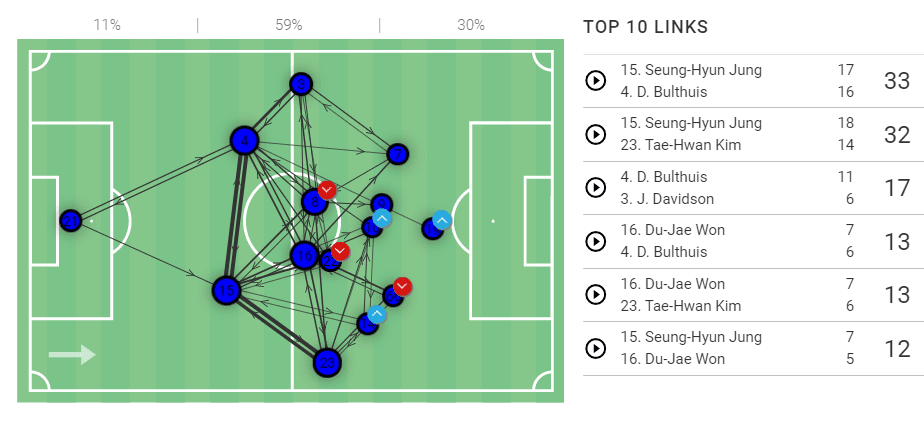
One simple reason behind Kim Do-Hoon instructing his LB to drop deep is that he tried to stretch the opponents vertically. When the height increases it becomes easier for the players to drop in between the lines and help in the attack.
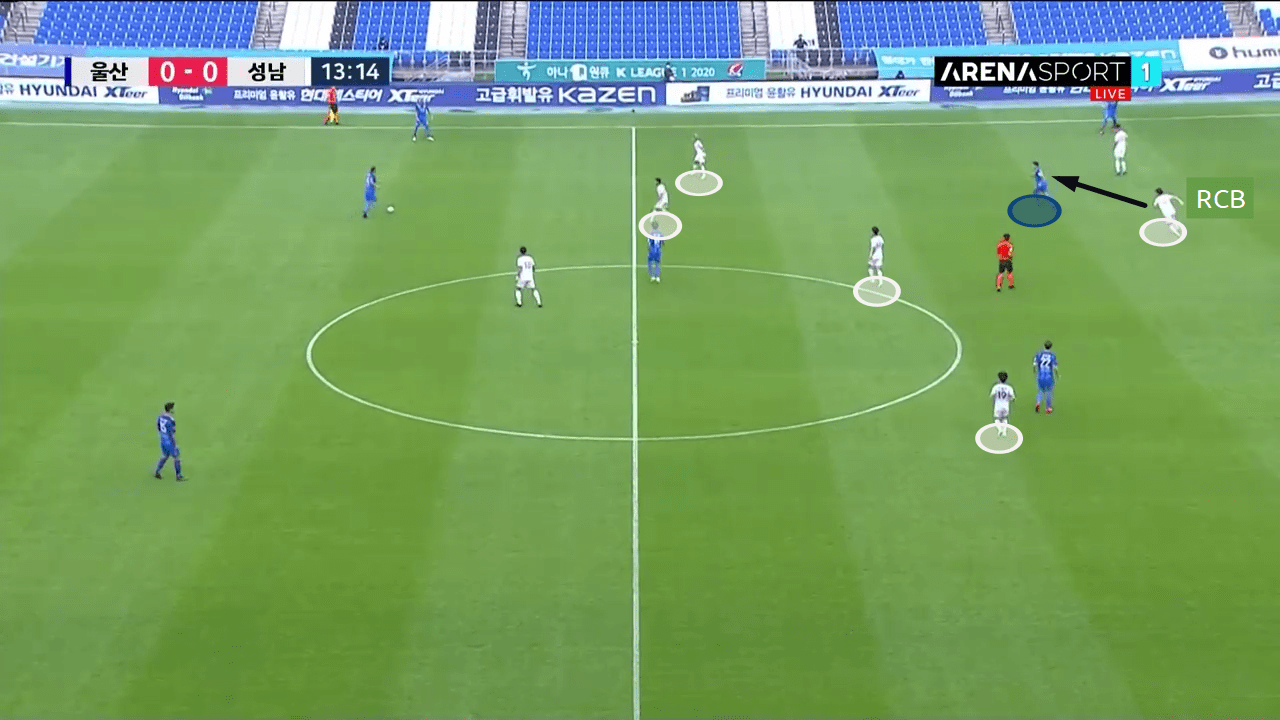
In this scenario, the LB drops deeper to form a three-man backline. When the LB drops to the first line of build-up, Seongnam RW, Choi is drawn towards him and even the RCM, Iskandarov, moves up the midfield line. Now the distance between the midfield line and the defensive line is much more than the Seongnam coach would have wanted and the Ulsan LCM, Shin, tries to take advantage of the situation by dropping in between the lines. However, Seongnam RCB moves up from his line and marks Shin closely.
Whenever this sort of situation was created by Ulsan, either one defender would closely monitor the player operating in between the lines or the ball would be intercepted by the midfielders themselves since they are so narrow and compact.
The other common way Kim Do-Haan tried to break the opponent is by playing long diagonal balls to the winger occupying the opposite flank. The long diagonal balls were mostly played by the LCB, Bulthuis, RB, Tae-Hwan Kim, and the pivot Du-Jae Won, when he was not closely marked by the Seongnam striker. Bulthuis played a staggering 12 long balls, his average being 5.81. Lee played eight long balls, mostly diagonal, his average being 4.4. The image below gives a clear indication of what Ulsan’s strategy were when it came to playing long balls.
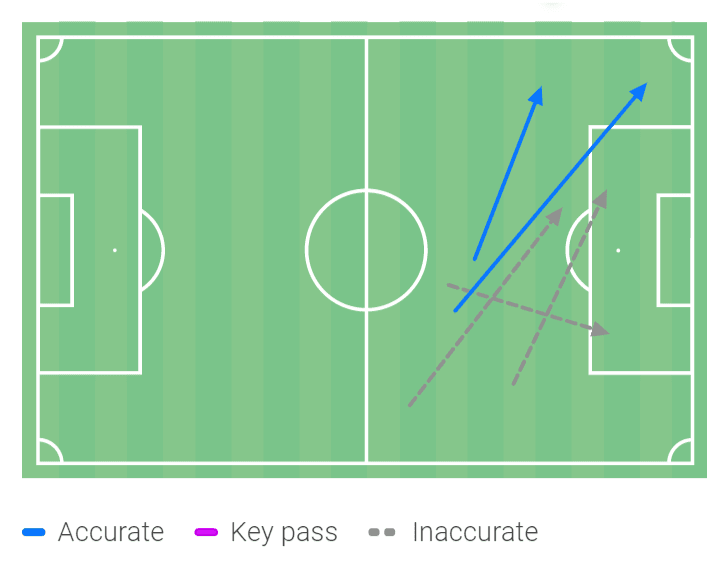
However, the long diagonal balls were mostly poor or inaccurate or the Seognam ball-near defender had already covered the space by the time the ball reached the opposition winger.
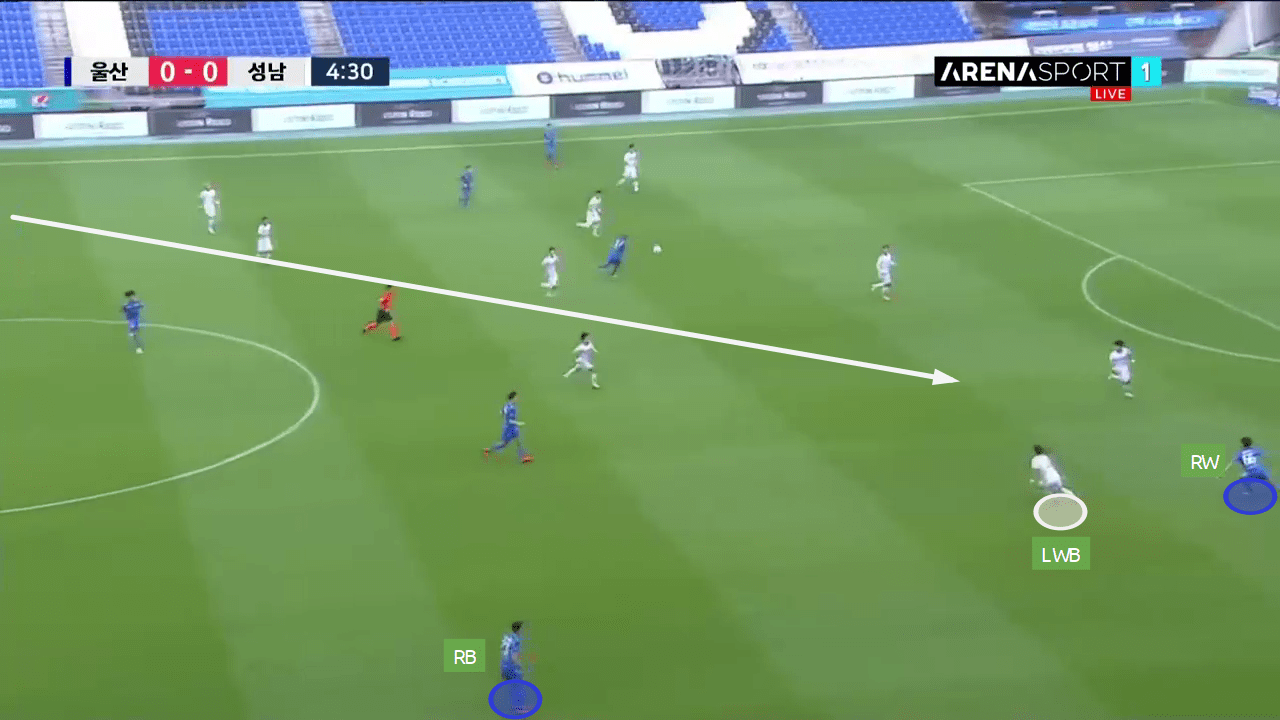
This image clearly depicts the muddle behind the long diagonal balls. Since the Seongnam midfielders were too compact and protected the central channel, there was a bit of space in the right flank. However, the RB, Kim wasn’t adventurous enough and did not make a run forward to overload the Seongnam LWB, Park, to cause him trouble. Park easily intercepted the long diagonal ball by Bulthuis and Seongnam began their build-up.
The Tigers tweaked their build-up often from playing diagonal long balls to a winger to the full-back overlapping the winger positioned in the half-space in order to create overload, however, the away side were up to the task and Ulsan attacks hardly materialised.
Seongnam in possession – the use of half-space
Seongnam love to play possession-based football with innumerous rotations. Every player in the team rotates in various situations except the goalkeeper.
I will be discussing how they build-up from the back in three situations:
- In the defensive third and from the defensive third to the middle third
- In the middle third
- Create chances in the final third
In the defensive third and from the defensive third to the middle third – creating overload in the defensive third
The Magpies love to build-up from the goalkeeper. When the goalkeeper has the ball, the RCB and the central centre-back drops deep in the box and wide on both sides of the goalkeeper. The LCB acts as the LB, RWB acts as the RB and the LCB moves furthest and acts as the LW. Basically, they build-up with four-man at the back. When the CBs move wide, LCM, Kim drops deeper and almost positions himself at the edge of the box centrally. The LW, Lee, drops deeper in his own half and positions himself in the half-space of the middle third.
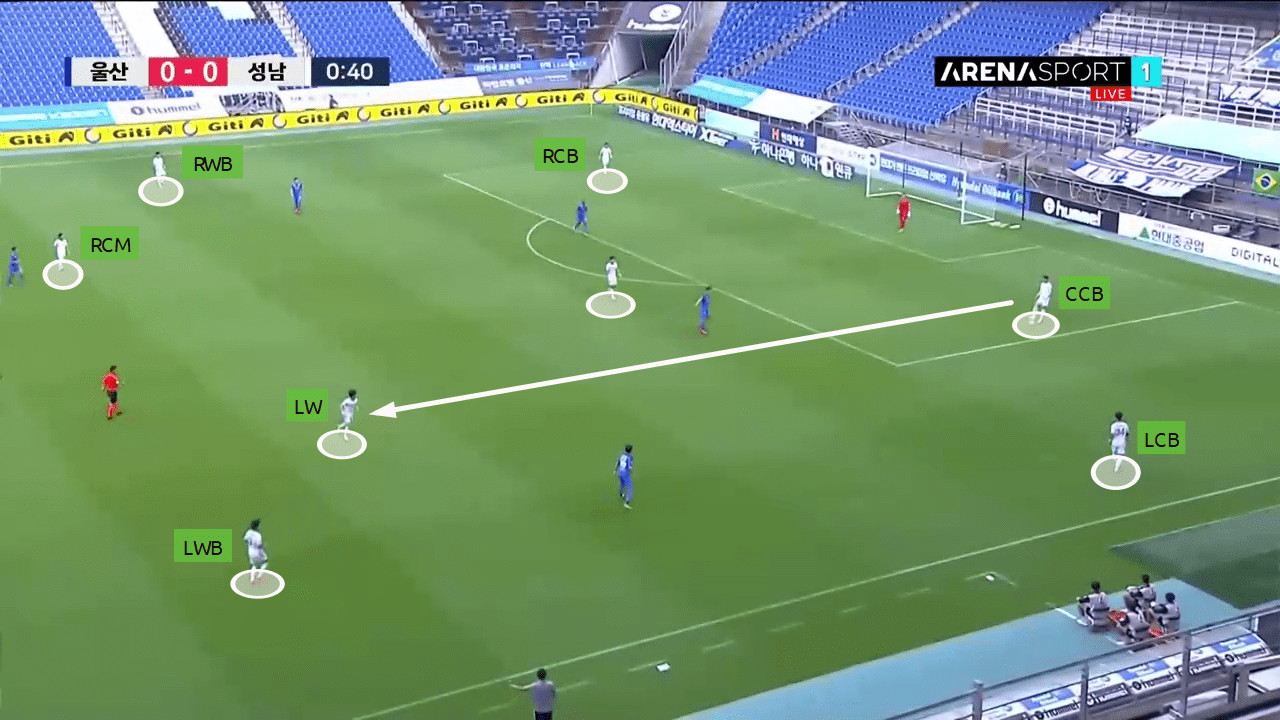
The Magpies forms this structure to build-up effectively from the back. LWB who is now acting as LW pins the Ulsan RB. LCB acting as a LB draws Ulsan RW’s attention, which helps the LW, Lee, to occupy the half-space with an opposition player far from him. As you can see in the above image, there is an unhindered passing lane from the central centre-back to the LW with no opposition player near the LW.
The goalkeeper is very good with his feet, this is one reason the Magpies start very deep. As it can be seen in the picture below, when the opposition felt they had cut every short passing lanes from the goalkeeper, he plays a perfect lobbed ball to the RWB and Seongnam builds-up from the back
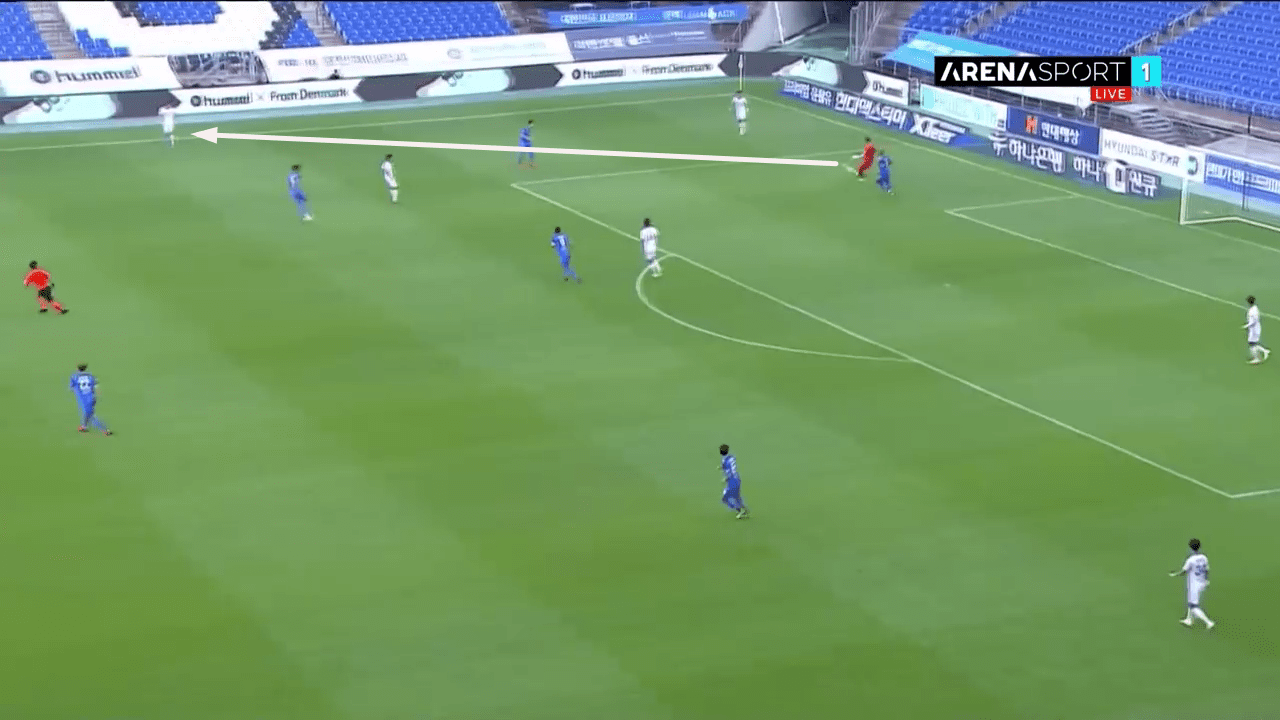
The Magpies build-up so effectively from the defensive third to the middle third by creating overloads. As you can see in the first image of this section, Seongnam creates a 9 vs 5 (considering the GK) situation in the defensive third. However, they fail to create any chances through the effective build-up as overloading the defensive third underloads the other sections of the field.
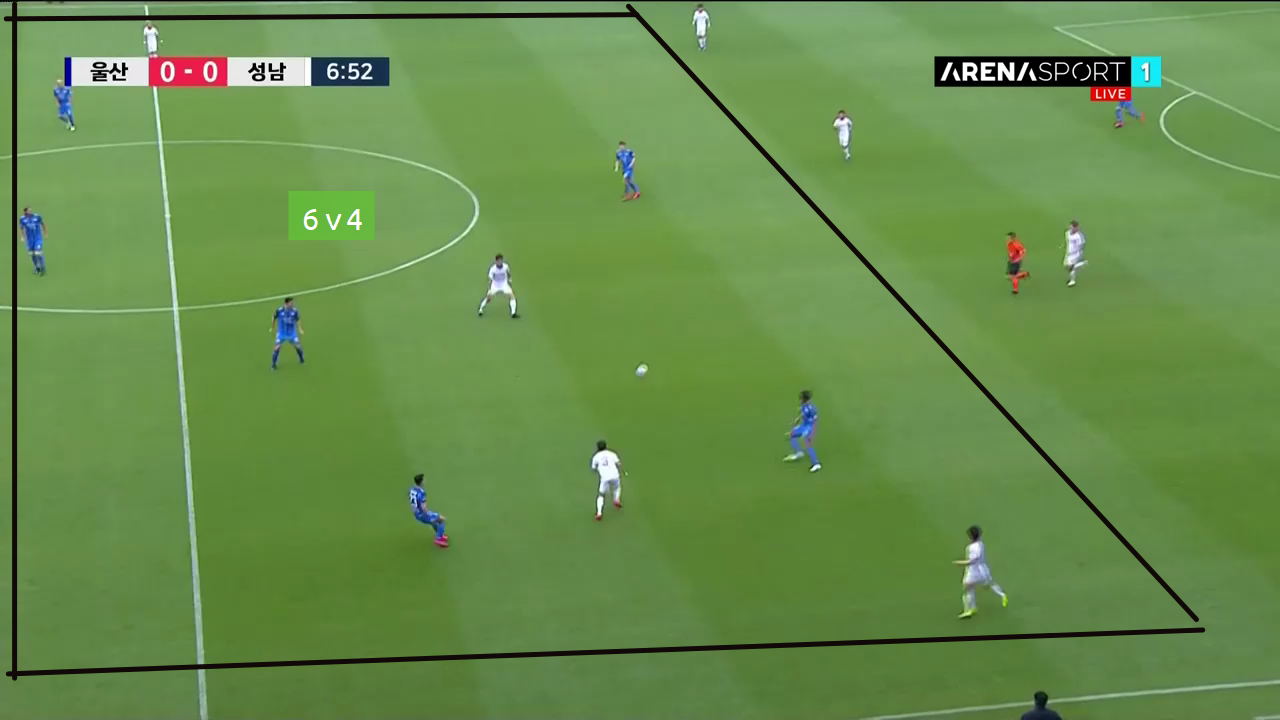
As can be seen in the picture above, the goalkeeper plays a perfect ball to the LWB, Park. He chests it down for his teammate but he doesn’t have any forward options to progress the ball into an attacking area, thus he has to take a lateral route. This is one area the Magpies gaffer surely needs to invest his time.
In the middle third
Even in the middle third the LW, Lee is key to the build-up. With LWB providing width in the wings, Lee often positions himself in the half-space to provide a passing lane to the defensive players.
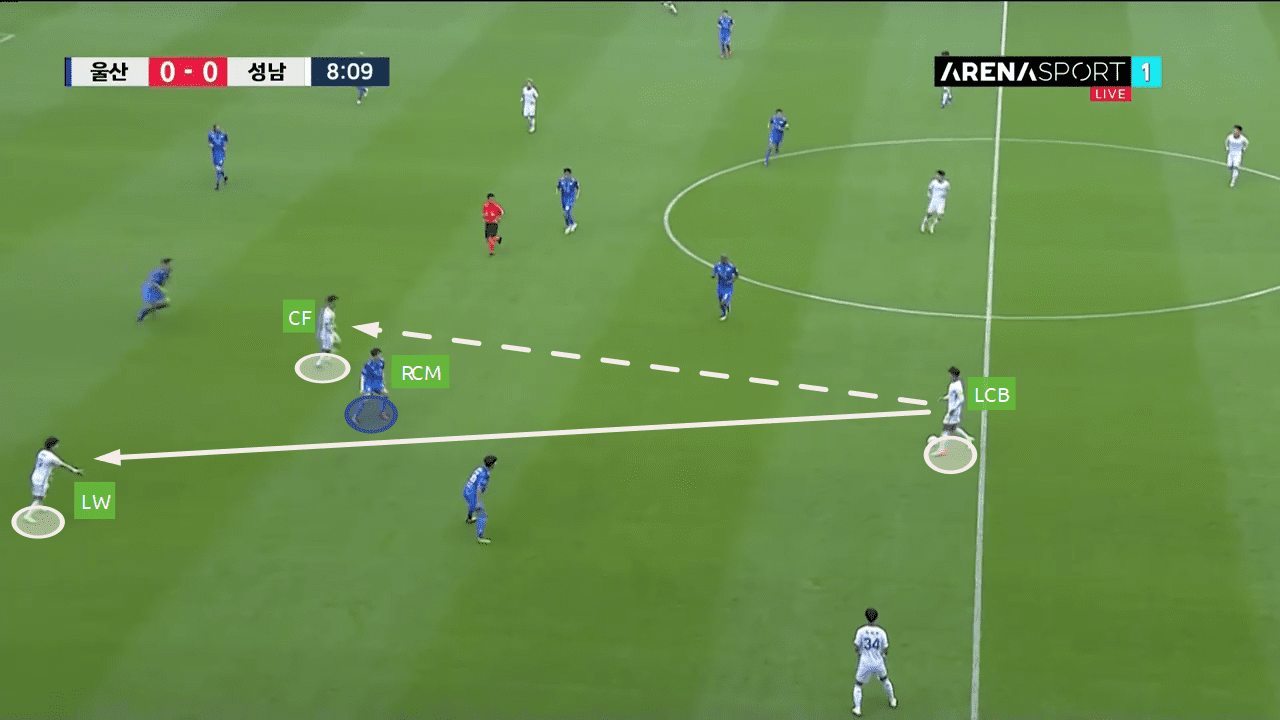
As can be seen in the image above, the Tigers do a very commendable job to lessen the height of their defensive structure with all the three lines very close to one another. However, with the striker dropping deep creates a conundrum in the Ulsan RCM’s mind as the LCB now has two passing lanes, one to the striker and another to Lee. The RCM opts to prevent the passing lane to the striker and the LCB was clever enough to pass it to Lee and progress the ball.
Seongnam rotated too much but their passing wasn’t at the same speed as their rotation. Amalgamated with slow passing, Ulsan also defended pretty well to counter Magpies’ rotation.
Chances created in the final third
The Magpies were patient when in possession and created chances only when Ulsan’s defensive line made any error.
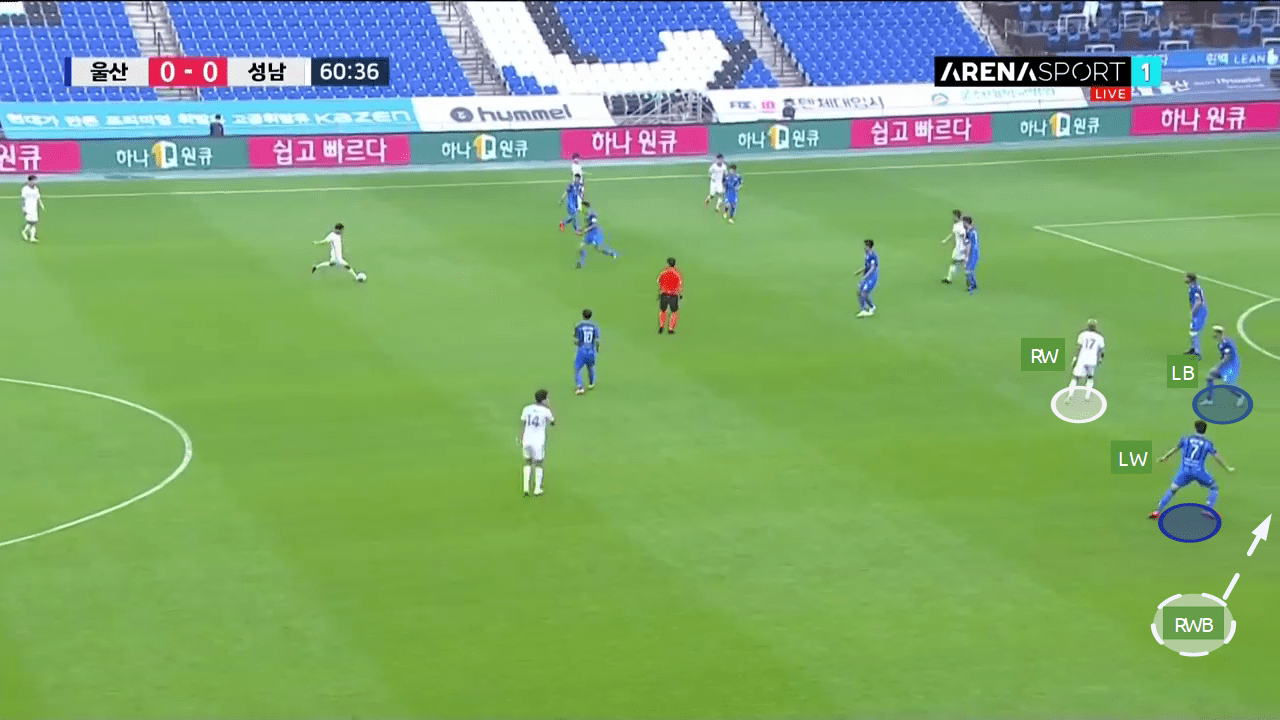
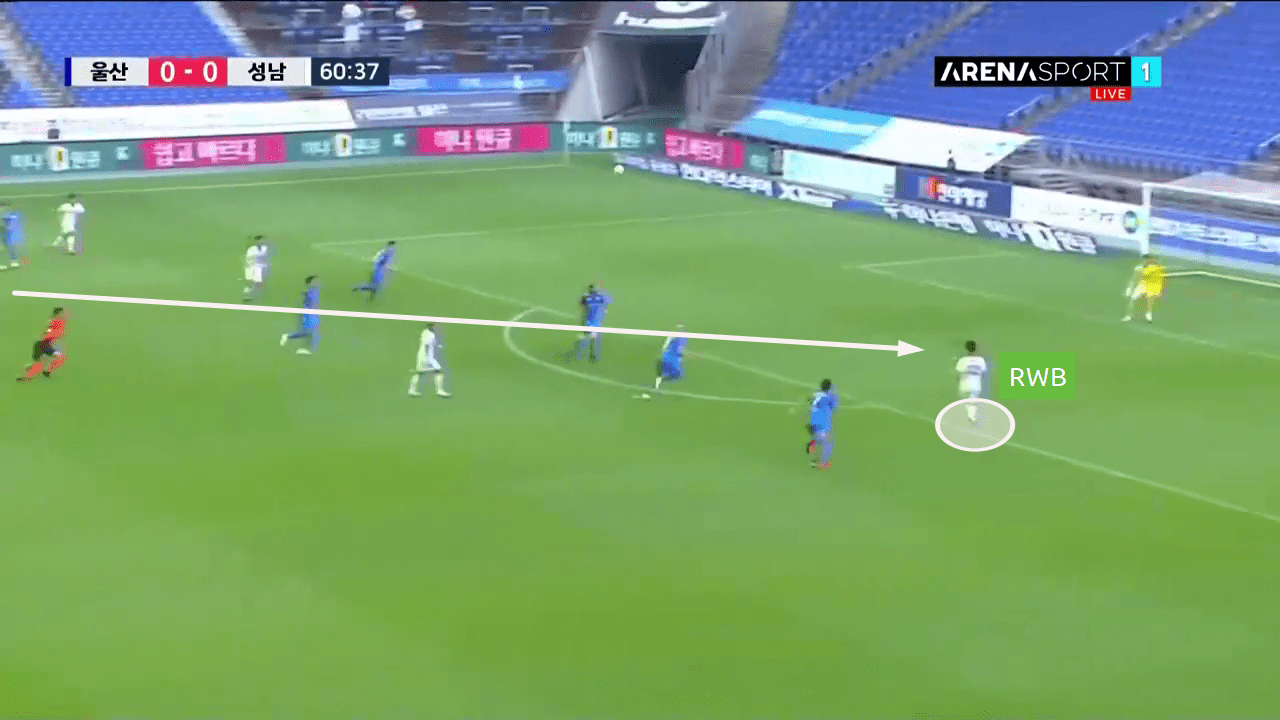
In this scenario, the Seongnam RW, Choi was inverted and dragged Ulsan LB, Davidson, out of his position. The Magpies RWB, Tae-Heui Lee was adventurous enough, probably the only time he positioned himself so high and made run behind the defensive line. Ulsan LW, Kim also did not notice the run made by Lee. Fortunately for Ulsan, they did not concede from this sequence.
Ulsan out of possession
In the final third
The Tigers maintained a high block when the Magpies tried to play out from the goalkeeper, however, they did not indulge in pressing high, rather they tried to prevent the passing channels to the middle third, which they could not, most of it was due to the overload created by the Magpies.
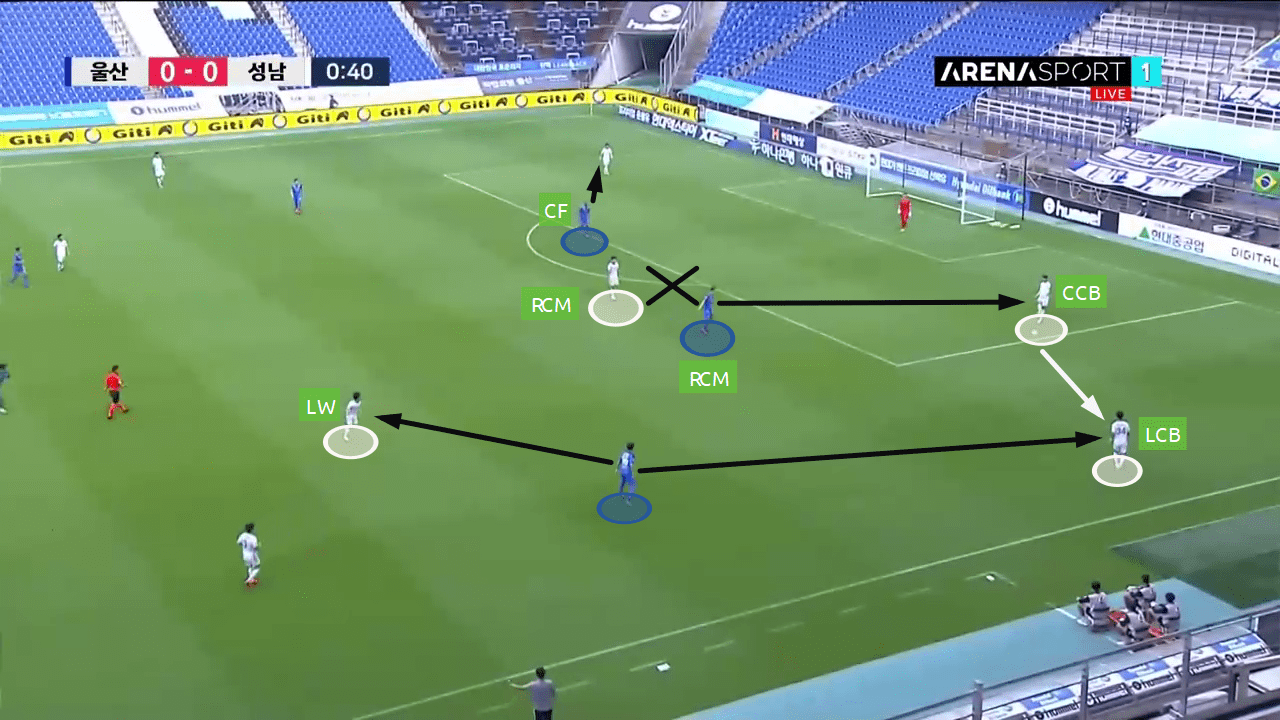
Here, RCM, Myong-Jin Ko prevented the passing lane to the RCM of Seongnam. Júnior Negrão, the striker, positioned himself in between the RCB and RCM to prevent any lateral pass. The RW, Seol positioned himself in between the LW of Seongnam, who sat in the half-space, and LCB.
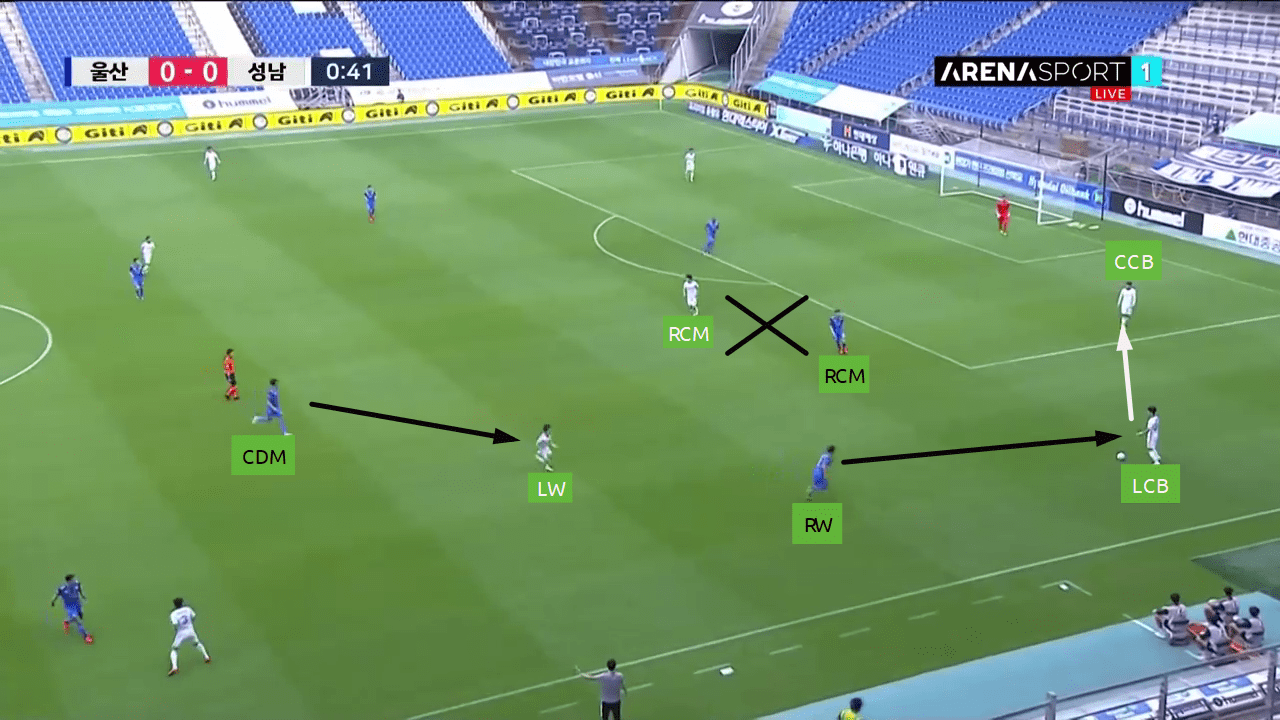
Once the ball was passed to the LCB, Ulsan players used coordinated jumps effectively to contain Seongnam’s build-up. RW moved up to press the LCB. The pivot or CDM moved up to mark the LW and RCM of Ulsan cover shadowed RCM of the Magpies. Now the LCB had no option but to pass it back to the central centre-back.
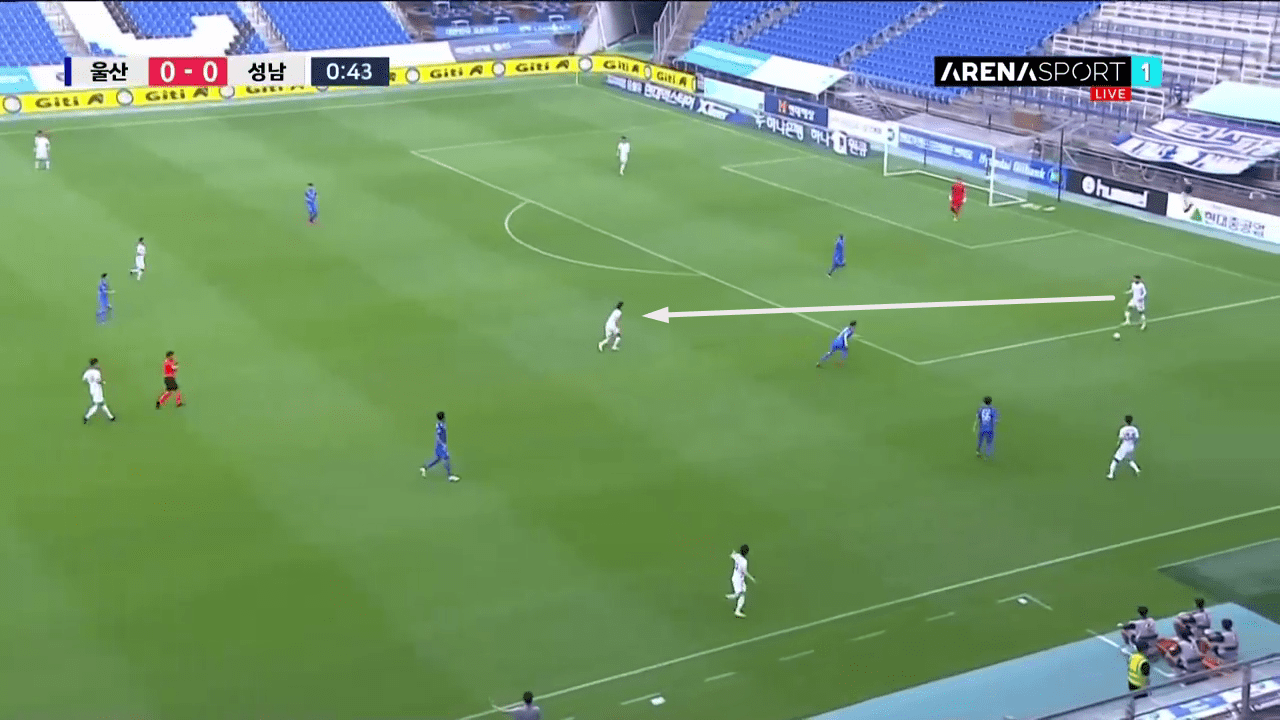
When the ball was passed back, the RCM moved up to press the central centre-back, however, he did not use his cover shadow well and the Seongnam captain easily progressed the ball.
The forward players of Ulsan often did not use their cover shadow well. Overload amalgamated with poor cover shadow helped Seongnam to build up from the back.
In the middle third
In the ‘Seongnam in possession’ section, we have showed how Seongnam used LW in the half-space to progress their attack. To counter that, Seongnam dropped a player deeper in the third line of defence to form 4-2-3-1.
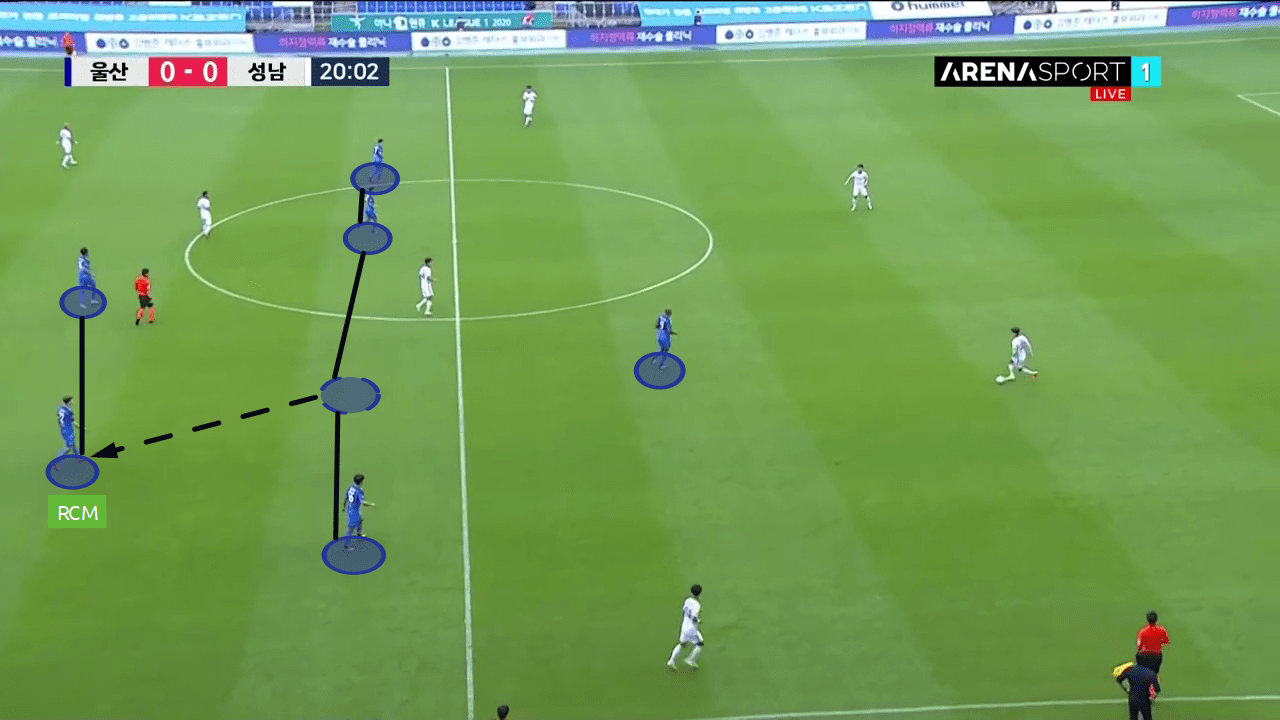
In this scenario, the RCM dropped deep from his line to prevent the LW of Seongnam operating freely in the half-space.
The Tigers may have been defeated time and again in the defensive third of Seongnam, where Seongnam used overloads to build out to the middle third. However, Ulsan was very sound defensively in their own half, with Seongnam registering only three shots in the match.
Introduction of Bjørn Johnsen
Bjørn Johnsen was introduced in the 71st minute by Kim Do-Haan to add more firepower in the attack and switched to 4-4-2.
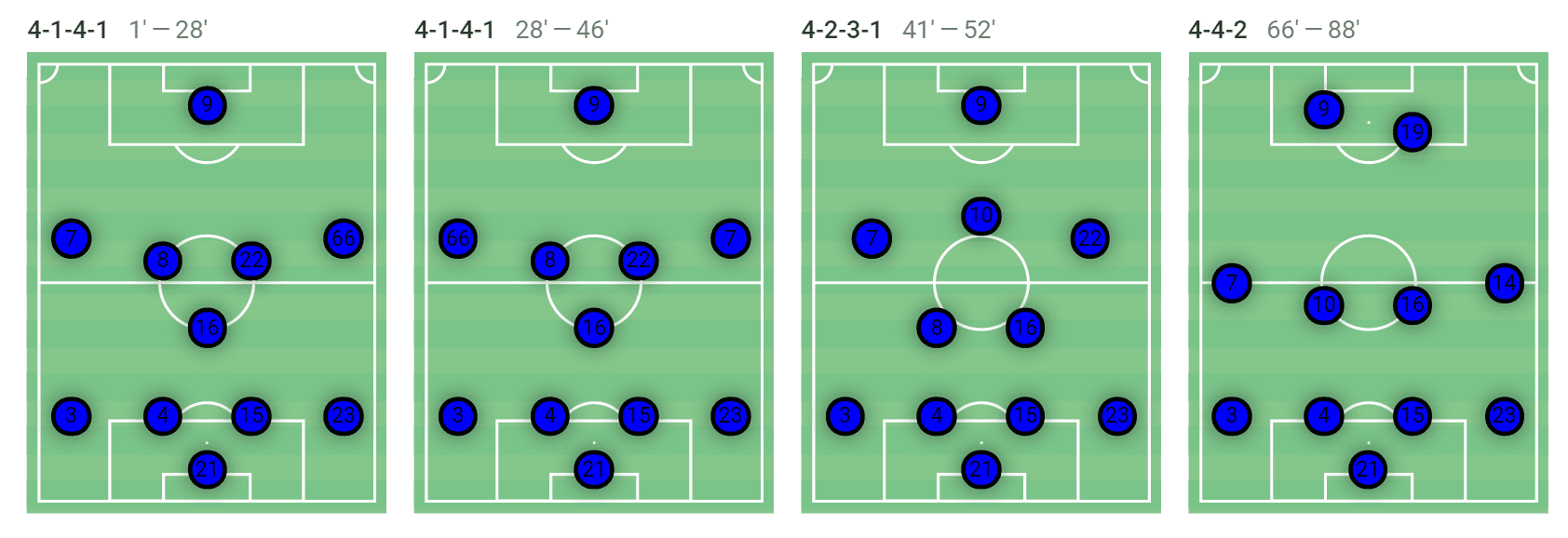
Johnsen is a stout figure and was introduced to hold up the play and feed the ball to the other players in close proximity which can be validated by the long balls Bulthuis played to his direction once Johnsen was introduced. Out of the 12 long ball Bulthius played, seven were after Johnsen’s introduction and six were directly to him.
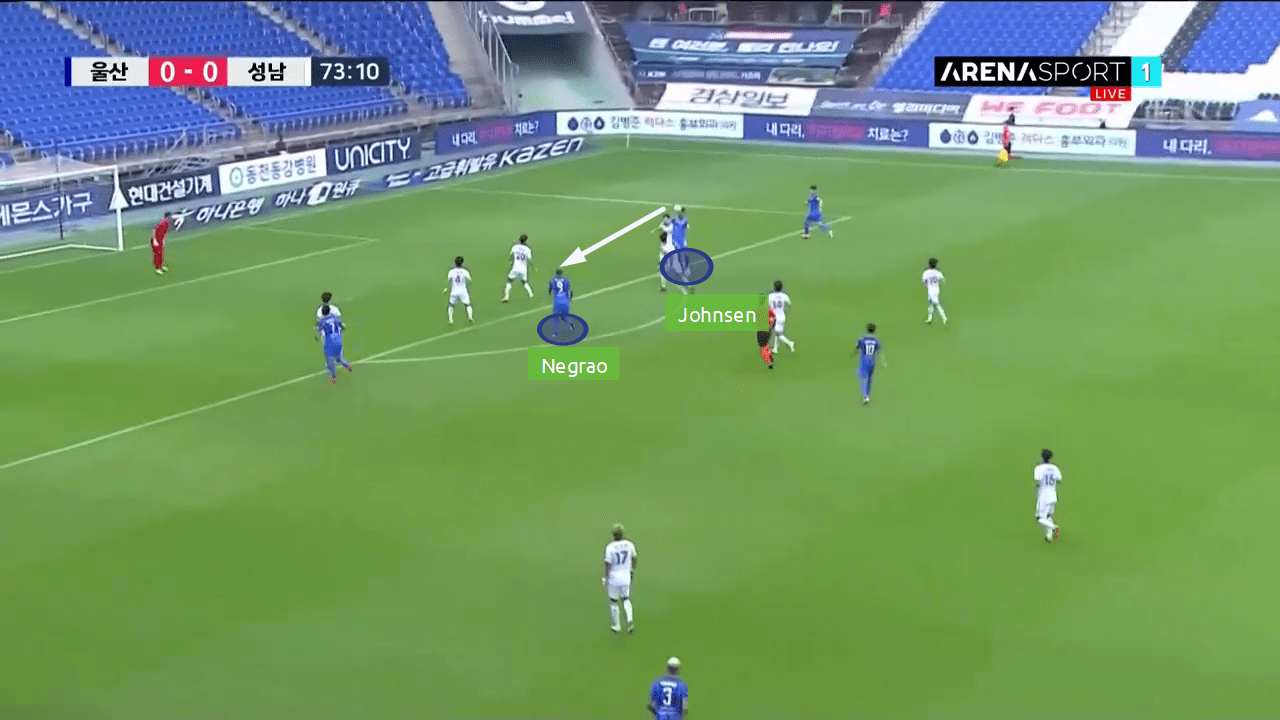
Here, Bulthuis played a long ball towards him and he laid the ball towards his strike partner, Negrão. However, he failed to control the ball and the chance was wasted.
The other change after Johnsen’s introduction was constant crosses by the right-back, Tae-Heui Lee, to the box. Lee, who hardly overlapped his right-winger went on a full adventure mode constantly dribbling past the opposition and putting crosses onto the box. Through one of his crosses, Negrão scored the winner for Ulsan.
Conclusion
The game turned out to be exactly as the fans expected, with the overall xG of the match a mere 1.35, lowest in any fixture of this K-League 1 campaign. The game was of a cat and mouse with constant tweaks in the tactics by both the managers to counter one another as seen in this tactical analysis.
Seongnam’s effective build-up was only till their own half and above that, they hardly could progress the ball. All their rotations were too slow and the Tigers would quickly adapt to Seongnam’s rotations and contain the Magpies’ attack.
Ulsan, the highest-scoring team this season, had to wait till the 87th minute, to score a winner. It speaks a volume about Seongnam’s compact defending. However, the major change in the tactics by Kim Do-Haan led to Ulsan’s winner. The match could have turned out to be a draw any other day.
Júnior Negrão continues his red hot form with the seventh goal of the campaign and Ulsan fights to see the light at the end of the tunnel.






Comments